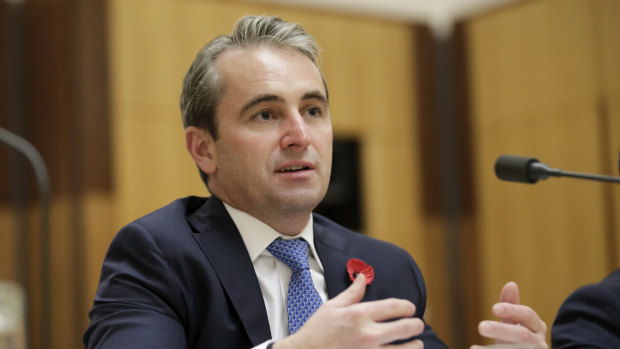This was published 5 years ago
CBA says more customers using tax refunds to get on top of mortgages, credit card debt
By Clancy Yeates
The Commonwealth Bank says consumers are using the Morrison government's tax refunds to get on top of mortgage and credit card debt, with fewer people falling behind on their loan payments in the latest quarter.
In a market update on Tuesday, the country's biggest bank said arrears rates for credit cards and home loans dropped in the September quarter, and it believed the tax refunds were a key reason for the decline, alongside seasonal factors.

Commonwealth Bank chief executive Matt Comyn said the bank faced a "challenging operating environment."Credit: Alex Ellinghausen
Although there was not the same fall in arrears in personal loans, the trend came as the banking giant's charges for bad debts remained low, helping its bottom line.
"Consumer arrears improved in the quarter due to seasonality and the benefit of higher tax refunds. Personal loan arrears rates remained elevated due to lower portfolio growth and continued pockets of stress in western Sydney and Melbourne," CBA said in the trading update.
The bank highlighted consumers' use of tax refunds to pay down debt in an update that said its unaudited cash profits rose 5 per cent to $2.3 billion in the three months to September.
In a further sign of consumers being cautious with their cash, the bank said its household deposits rose at an annualised pace of 10.4 per cent in the quarter.
While the rise in profit contrasts with the recent soft results from ANZ Bank, Westpac and National Australia Bank, CBA benefited from the absence of any extra charges for customer compensation - something that may not be repeated at its half-year results in early 2020. Like rivals, CBA also warned profit margins would continue to come under pressure from very low interest rates.
Bell Potter analyst TS Lim said the increase in customers repaying debt was a "good problem to have" for the bank, as it slowed down loan growth while boosting credit quality. Mr Lim said CBA's trading update was overall a "healthy" result.
"Revenue growth is more than cost growth - I think that's always good," Mr Lim said.
Data from the major banks also shows most customers have used interest rate cuts to get on top of their loans, and CBA in August said its new app would "suggest" customers use tax return windfalls to pay down debt.
After its key rivals painted a downbeat picture on the outlook for 2020 in their recent results, CBA also flagged further "headwinds" for its net interest margin (NIM), which compares funding costs with what the bank charges for loans.
"The bank remains well placed in a challenging operating environment, characterised by global macroeconomic uncertainty and historically low interest rates," chief executive Matt Comyn said.
CBA's net interest income was 3 per cent higher in the quarter, helped by solid growth in mortgage lending, business lending and deposits, and the fact there was an extra one and a half trading days in the quarter. The bank's non-interest income also increased, by 7 per cent, due to asset sales, a lack of insurance claims, and higher sales in its global markets business.
Operating expenses were 9 per cent lower because high compensation costs were not repeated, while expenses rose 2 per cent if "notable" items were excluded.
As key rivals struggle to expand their loan books, CBA's loan book grew at an annualised rate of 3.5 per cent compared with the June quarter, and business loans grew at 2.8 per cent.
CBA's common equity tier 1 capital ratio edged down from 10.7 per cent to 10.6 per cent of risk-weighted assets. It expects the closely watched ratio, a key gauge of bank strength, to increase to 11 per cent due to various previously announced asset sales, including the sale of its life insurance business.